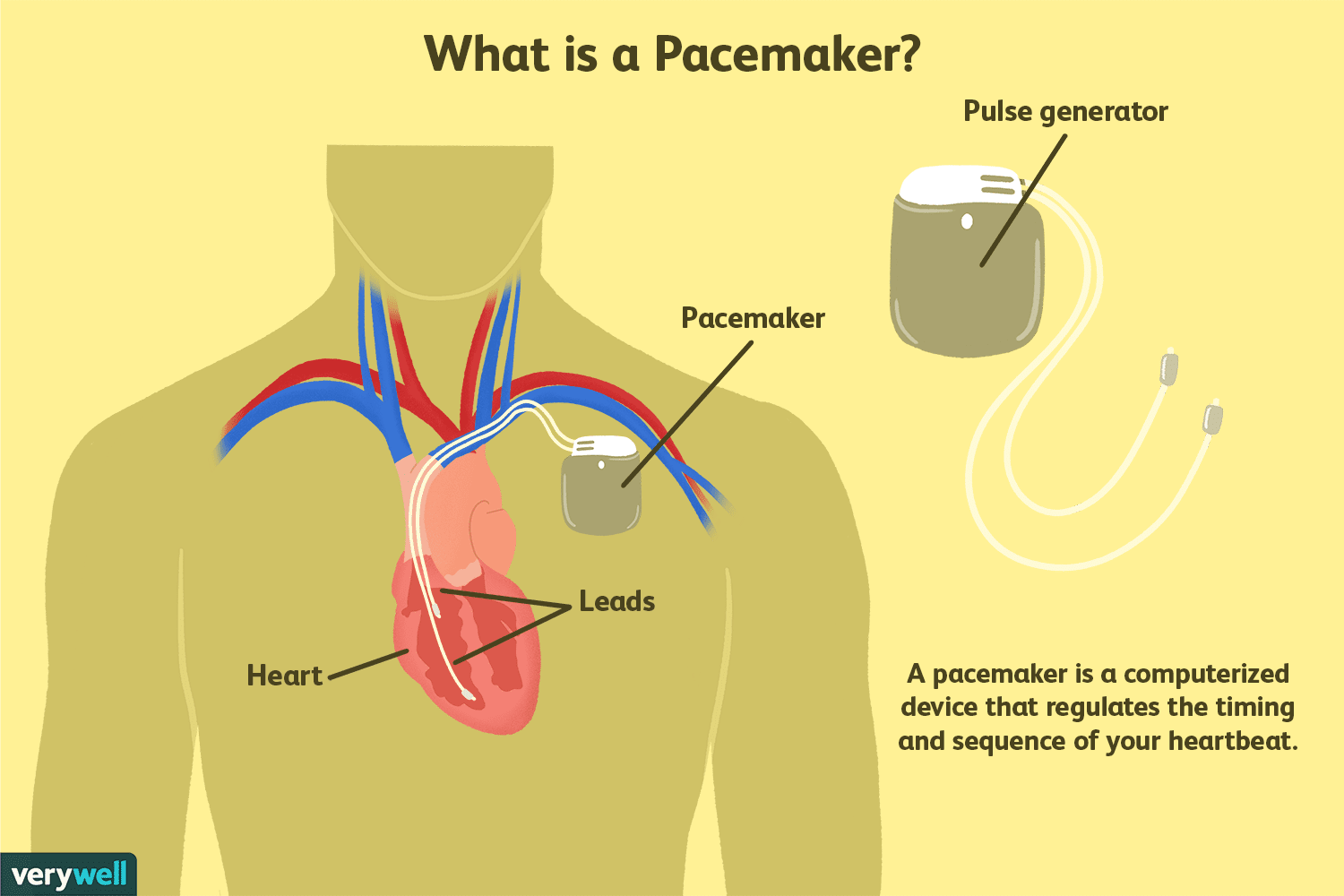
Pacemaker Implantation
A pacemaker is a small device that is placed under the skin inyour chest to help control your heartbeat. It’s used to help you heart beat more regularly if you have an irregular heartbeat (arrhythmia), particularly a slow one. In most cases pacemakers are implanted during a minor surgical procedure, needing only local anesthesia and moderate sedation.
An implanted electronic pacemaker mimics the action of your natural electrical system. A pacemaker comprises two parts:
- Pulse generator. This small metal container houses a battery and the electrical circuitry that regulates the rate of electrical pulses sent to your heart.
- Leads (electrodes). One to three flexible, insulated wires are each placed in a chamber, or chambers, of your heart and deliver the electrical pulses to adjust your heart rate.
Pacemakers work only when needed. If your heartbeat is too slow (bradycardia), the pacemaker sends electrical signals to your heart to correct the beat.
There is a leadless pacemeker for certain patients who meet specific clinical criteria.